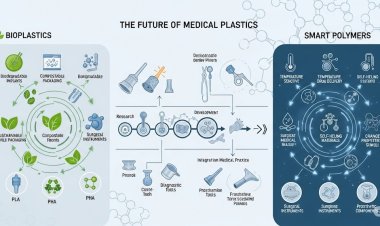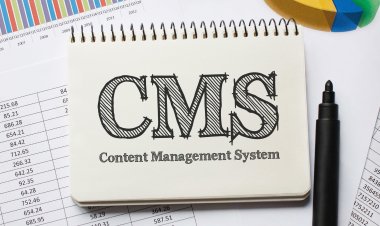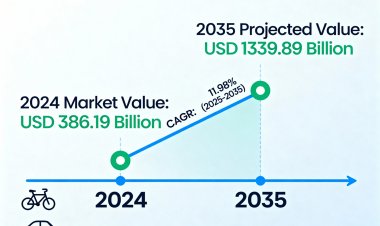Global Teledentistry Market Size to Reach $5.03 Billion at a CAGR of 16.2% by 2030
Vantage Market Research expects the Teledentistry Market to reach USD 5.03 Billion by 2030, exhibiting a growth rate (CAGR) of 16.2% during 2023-2030.

The Global Teledentistry Market size reached USD 1.51 Billion in 2022. Vantage Market Research expects the market to reach USD 5.03 Billion by 2030, exhibiting a growth rate (CAGR) of 16.2% during 2023-2030.
Table of Contents
|
I. Introduction: |
|
|
|
|
|
|
II. Benefits Beyond Efficiency: |
|
|
|
|
|
|
III. Adoption and Landscape: |
|
|
|
|
|
IV. Competitive Dynamics: |
|
|
|
|
|
|
V. Conclusion: |
|
|
|
|
Introduction
Teledentistry, the amalgamation of electronic information, imaging, and communication technologies in dentistry, has witnessed a remarkable evolution, particularly in response to the challenges posed by the COVID-19 pandemic.
Request Sample Report of Teledentistry Market @ https://www.vantagemarketresearch.com/teledentistry-market-2376/request-sample
Top Companies in Global Teledentistry Market
- Koninklijke Philips N.V. (Netherlands)
- Denteractive Solutions Inc. (U.S.)
- Toothpic (U.S.)
- Align Technology GMBH (Switzerland)
- SmileDirectClub (U.S.)
- MouthWatch LLC (U.S.)
- Dentulu Inc. (U.S.)
- Smile Virtual LLC (U.S.)
- Virtudent Inc. (U.S.)
Defining Teledentistry
The American Teledentistry Association (ADA) defines teledentistry as a range of technologies, including store and forward, remote patient monitoring, live video, and mobile health. It offers and supports all facets of dental care, including consultation, diagnosis, treatment, and education. The scope of teledentistry extends beyond geographical constraints, making it an invaluable tool for managing dental problems, especially in remote and underserved areas.
The Terminological Tapestry
The terminology associated with teledentistry is diverse, reflecting its multidimensional nature. From being synonymous with telemedicine in dentistry to terms like "telecare," "telehealth," "eHealth," and "mHealth," the terminology highlights the dynamic and ever-expanding nature of this field. Furthermore, terms like "digitalized oral healthcare services" and "digital dental consultation" add layers to its identity, showcasing the technological integration that defines teledentistry.
Growing Requirement: The Impetus of the Pandemic
The COVID-19 outbreak spurred on the rising use of teledentistry. With the necessity for social isolation and the categorization of face-to-face dental care as non-essential in many countries, teledentistry emerged as a viable alternative. Its primary focus was on providing remote oral health services to bridge the gap created by physical distancing. This shift has facilitated communication between dentists and patients and strengthened collaboration among healthcare providers.
Teledentistry's Role in Reducing Inequality
Teledentistry is positioned as a tool to reduce inequality in access to oral healthcare. It acts as a triage system for cases with potential severe morbidity, enabling the remote monitoring of patients with pre-existing conditions. In addition to benefiting those in remote areas, teledentistry offers specialized teleconsultations, particularly valuable in public healthcare networks. It proves instrumental in optimizing office visits, ensuring necessary check-ups, and accommodating patients unable to visit in person.
Buy Now Our Teledentistry Industry Report @ https://www.vantagemarketresearch.com/industry-report/teledentistry-market-2376
Benefits of Teledentistry
The American TeleDentistry Association highlights several benefits of teledentistry, ranging from increased appointment flexibility and enhanced standards for quality care to cost-effectiveness for patients. However, the actual impact extends beyond these, transforming the way dental care is accessed and delivered:
- Access from Home: Teledentistry brings the initial dental visit to the patient's home, catering to individuals who face barriers like limited transportation, disabilities, or fear of in-person visits.
- Sooner Appointments: Virtual appointments eliminate the wait time associated with in-person visits, allowing patients to address dental concerns promptly through secure online portals.
- Access to Care: In underserved areas, where access to dental professionals is limited, teledentistry becomes a lifeline. Timely consultations can prevent the escalation of oral conditions, positively impacting overall health.
- Shorter Appointments: Virtual dental appointments, averaging 10 minutes, save patients and dental offices time. This reduces time off from work or school and streamlines follow-up appointments.
The Future of Teledentistry
Adopted by the American Dental Association in 2015, teledentistry witnessed accelerated growth during the global lockdowns of the COVID-19 pandemic. The ongoing need for access to quality dental care shapes its future trajectory. Approximately 40% of adults in the U.S. report not receiving dental care annually, with higher numbers in lower-income and urban areas. Teledentistry is essential to address the worldwide oral health crisis and increasing access to dental treatment, even if it will never fully replace traditional dental offices.
Teledentistry Adoption Rates
The ADA Clinical Evaluators Panel report reveals that 30% of dental professionals incorporate teledentistry into their practices, with more than half utilizing synchronous (53%) or asynchronous (63%) teledentistry. The primary motivations for adopting teledentistry include increased convenience for patients, the impact of COVID-19, and enhanced accessibility to providers. Interestingly, teledentistry serves patients of all ages and distances, with a significant proportion located within 20 miles of dental professionals using this technology.
Regional Landscape
The teledentistry landscape, akin to telehealth in general, is rapidly evolving. Accelerated by the COVID-19 pandemic, teledentistry constitutes 9.2% of the telehealth services industry ($2.6 billion) in the United States. As policymakers grapple with the challenges of regulating this dynamic field, technological advancements, including artificial intelligence and machine learning, are poised to expand teledentistry's capabilities further. These advancements include efficient data entry, automated processes, and remote diagnosis and treatment planning.
Competitive Dynamics
- In September 2023, Align Technology Inc., a global medical device company, showcased highlights from the 2023 Invisalign GP Summit, emphasizing the transformative potential of Invisalign clear aligners, iTero intraoral scanners, and the Align Digital Platform.
- In December 2023, Teledentistry.com and OrthoFX announced a strategic partnership to address the aftermath of the shutdown of SmileDirectClub. This collaboration aims to provide former SmileDirectClub customers a seamless transition to traditional dental care through virtual consultations and referrals to local, in-network dental practices.
- In February 2023, MouthWatch, LLC, introduced Dentistry. One, a virtual-first solution designed to revolutionize oral healthcare and the dental patient care journey.
- In January 2023, Dentulu partnered with Pearl to enhance diagnostic performance through AI-backed dental software. Dentulu users gain access to Pearl's Second Opinion®, a clinically approved AI software for detecting various dental conditions, thereby elevating the overall teledentistry experience.
Conclusion
Teledentistry has emerged as a transformative force in dentistry, driven by technological advancements, changing healthcare landscapes, and the impact of the COVID-19 pandemic. Its benefits, ranging from increased accessibility and flexibility to cost-effectiveness, position it as a key player in addressing global oral health challenges. As the teledentistry market continues to evolve, propelled by innovative partnerships and technological integrations, its role in providing quality dental care to diverse populations is set to expand. Teledentistry's trajectory indicates a positive future, filling gaps in oral healthcare and improving the general well-being of people globally, despite ongoing hurdles and restrictions.
Read Our Latest Press Release: Textiles Market - In-depth Analysis
Contact us
Eric Kunz
6218 Georgia Avenue NW Ste 1 - 564
Washington DC 20011-5125
United States Tel: +1 202 380 9727
Email: [email protected]
Website: Vantage Market Research


















